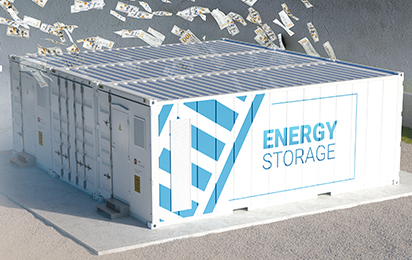As the global energy revolution unfolds, storage technologies like BESS (Battery Energy Storage System) are revolutionizing our understanding of power supply. While the focus is often on the high initial construction cost of BESS, the operational expenditure is frequently overlooked. As we invest in the development of larger BESS facilities, it is essential to recognize the long-term operational costs and challenges associated with decades of BESS usage.
Large-scale energy storage sites are often strategically positioned alongside renewable energy facilities, such as wind and solar plants, or in close proximity to major power transmission hubs. Many of these sites are located in remote and challenging-to-access areas. When significant breakdowns occur, the costs and time required for maintenance teams to travel to these sites can increase dramatically. In some cases, the time spent reaching the maintenance site actually exceeds the duration of the repair itself.
THE SOLUTION:
To mitigate these challenges, incorporate an integrated monitoring systems and secure remote connection networks in the initial setup phase. By taking a proactive approach, it ensures faster repair times and reduces maintenance costs, whether the maintenance teams are in-house or from equipment manufacturers.
Battery packs are the most expensive component in a battery energy storage system. To prevent overheating, they must have a temperature-controlled environments to prevent overheating, which is a challenge because critical communication devices that gather and transmit battery data, fire suppression systems, and the EMS computers are operating in environments without the benefit of air-conditioning. The dramatic rise in extreme weather events, like heatwaves, over the past 10 years, pose a significant threat to the longevity and reliability of computer and electronic components.
THE SOLUTION
Industrial-grade computers and components are designed to operate in these extreme conditions. operate without fans, have dual power inputs, and even waterproof features. This not only ensures a more reliable facility operation but also significantly curbs future maintenance costs.
With the increasing reliance on computer operations and industrial controllers over manual operations, software vulnerabilities and cybersecurity events, which can be a challenge for operation and maintenance (O&M). And with the advancements in technology, new software vulnerabilities and attack methods continue to surface.
Within the BESS system, industrial computers, controllers, communication devices, and smart sensors operate on embedded operating systems or applications, such as Linux, which is an operating system commonly used for industrial equipment. Linux distributors typically provide a maintenance cycle of 3 to 5 years, but since energy storage projects typically operate for ten or more years, it opens the system up to online threats. If the platform is attacked, it might require rewriting the program, which increases operational costs.
SOLUTION
After the distribution maintenance period ends, a new maintenance provider can ensure the system is updated, patched, and is safe from online threats. Incorporating cybersecurity updates in BESS maintenance plans are crucial. This not only safeguards the system from cyber attacks, but also ensures the continual and secure operation of BESS.
SUMMARY
To ensure the efficiency and longevity of BESS in today’s energy sector, it is important to prioritize its long-term operational costs. This means making informed decisions about construction sites, opting for high-quality electromechanical equipment, and implementing regular software cybersecurity updates. By taking a proactive approach and investing in remotely maintainable systems, industrial-grade components, and continuous software security updates, we not only guarantee the uninterrupted operation of BESS but also significantly reduce long-term maintenance expenses. These measures lay a strong foundation for the future energy transition, promoting a more sustainable and reliable power supply.

Be the first to learn about classes, training, webinars, products news and more.
©2025 MSI TEC, Inc ALL RIGHTS RESERVED
©2025 MSI TEC, Inc ALL RIGHTS RESERVED
We use only necessary cookies on this website to provide the best user experience and customer service.